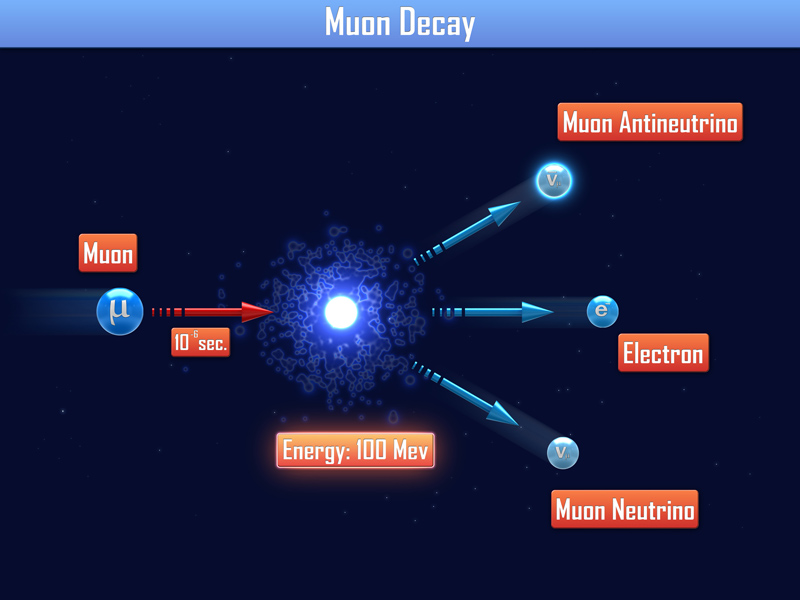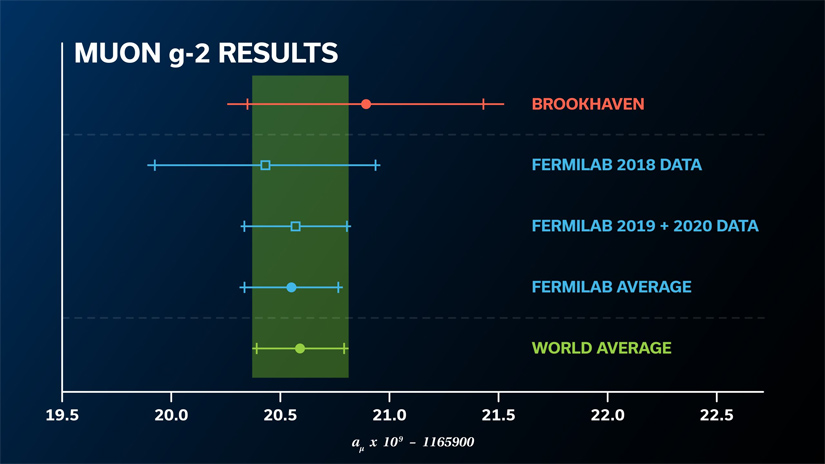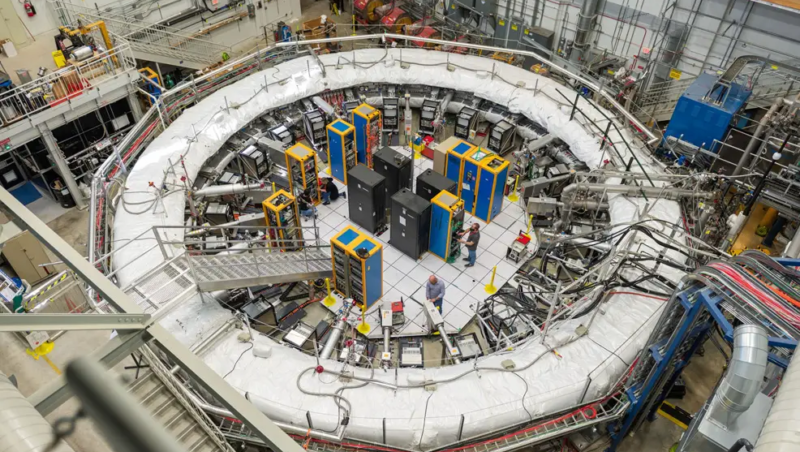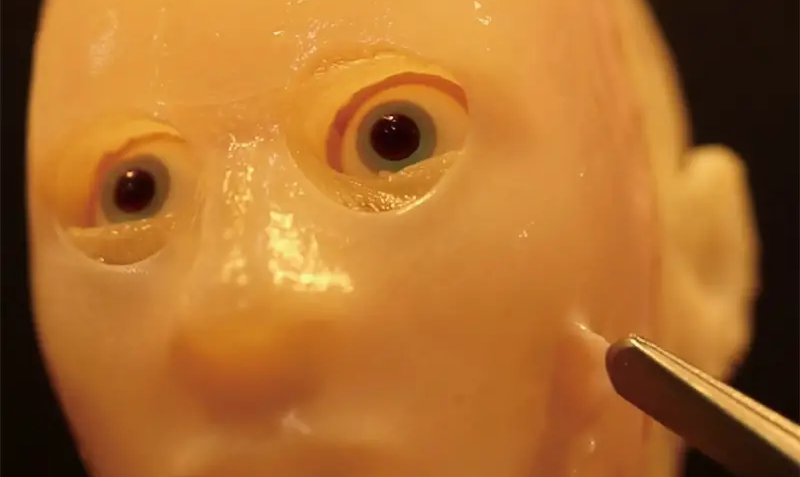Scientists at Fermilab report the most precise measurement yet of the magnetic moment of the muon. These particles are shown to wobble faster than predicted by the Standard Model, hinting at a possible fifth fundamental force.
This article was originally published by Future Timeline.
Scientists have made a breakthrough in understanding a tiny, subatomic particle called the muon. Their research took place at Fermilab – the leading facility for particle physics research in the United States – and improves on their previous results by twice the accuracy. The new findings could challenge our current understanding of the universe and suggest there might be a new fundamental force, in addition to the existing four we know of (electromagnetic, gravitational, strong nuclear, and weak nuclear force).
Muons are like heavier cousins of electrons. They have a mass of 106 MeV, which is 200 times greater than the electron’s mass. While the electron appears to be completely stable, the muon is extremely short-lived, decaying after a lifetime of just 2.2 millionths of a second into an electron, a neutrino, and an antineutrino. This process occurs via the weak force.
Muons behave like tiny magnets that wobble when exposed to a magnetic field. Scientists are interested in measuring how much they wobble, a property represented by the symbol g. According to current theories, this value should be close to 2.
However, muons interact with a “sea” of other particles that pop in and out of existence around them, and these interactions can change the wobble slightly. Current theory accounts for all known particles. If there are unknown particles, however, then the wobble could be different from what we expect. That is why scientists are so excited – the results of this experiment could hint at a new, unknown particle or force.

The Muon g-2 collaboration is a group of nearly 200 scientists from 33 institutions in seven countries and includes almost 40 students who have received doctorates based on their work so far at Fermilab.
For this latest experiment, they sent a beam of muons into a superconducting magnetic storage ring, which measures 15 m (50 ft) in diameter, where they circulated about 1,000 times at nearly the speed of light. Detectors lining the ring allowed scientists to determine how rapidly the muons were processing (“wobbling”). The team also precisely measured the strength of the magnetic field to then determine the value of g-2.
The new experimental result, announced by the Muon g-2 collaboration this month, is twice as accurate as previous studies, significantly narrowing down the range of uncertainty. It corresponds to a precision of 0.20 parts per million:
g-2 = 0.00233184110 +/- 0.00000000043 (stat.) +/- 0.00000000019 (syst.)

In addition to a much larger data set (21 times the size of a predecessor experiment at Brookhaven National Laboratory, New York), the research team updated the Fermilab facility with improved techniques, instrumentation, and simulations. Following six years of data collection, their updated measurement of g-2 indicates that muons are wobbling slightly faster than predicted by the Standard Model.
“This measurement is an incredible experimental achievement,” said Peter Winter, co-spokesperson for the Muon g-2 collaboration. “Getting the systematic uncertainty down to this level is a big deal and is something we didn’t expect to achieve so soon.”
“The wobbles are due to the way the muon interacts with a magnetic field,” explained Professor Jon Butterworth of University College London. “They can be calculated very precisely in the Standard Model, but that calculation involves quantum loops, with known particles appearing in those loops. If the measurements don’t line up with the prediction, that could be a sign that there is some unknown particle appearing in the loops – which could, for example, be the carrier of a fifth force.”
“We’re talking about a fifth force, because we can’t necessarily explain the behavior [in these experiments] with the four we know about,” said Dr Mitesh Patel, from Imperial College London.
The collaboration anticipates releasing their final, most precise measurement of the muon magnetic moment in 2025 – setting up the ultimate showdown between Standard Model theory and experiment. Until then, physicists have a new and improved measurement of muon g-2. A paper describing the collaboration’s latest result has been submitted this month to the journal Physical Review Letters.





